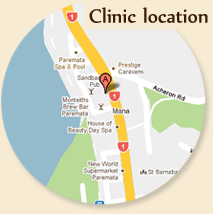Othopaedic Surgery Procedures by Mr Nigel Willis
Introduction
Nigel Willis has vast experience in performing a variety of orthopaedic surgical procedures, all of which are performed at Bowen Hospital.
Below is a brief overview of all of Nigel Willis’s procedures, plus a link to the comprehensive version of each one. All procedures are carefully planned and executed according to the specific nature of each condition. Please note that no two procedures are exactly the same.
Nigel Willis employs modern orthopaedic surgery techniques to alleviate pain and/or discomfort, which prevented patients from carrying out both ordinary and specific day-to-day activities.
With each procedure, there is a risk for potential complications, however Mr Willis will inform you about these prior to you agreeing to undergo a procedure. You can decide against having a procedure performed if you are not willing to accept the risks involved. Rather than undergoing surgery, you may choose to continue with conservative (non-operative) treatment of your condition.
Below is a brief description of all orthopaedic surgical procedures, performed by Nigel Willis.
-
ACL Reconstruction
Anterior Cruciate Ligament (ACL) reconstruction is a major surgical procedure in which one of the ligaments in the knee is replaced with a new one. The ACL keeps your shin bone (tibia) in place.
This surgery is used to replace a ligament which has been torn or damaged beyond repair. ACL reconstruction is especially common among athletes, as they tend to be hard on their knees, although other people may require this surgery at some point in their lives as well, depending on their level of activity.
ACL reconstruction surgery should be considered for all individuals who desire a return to sports or activities that require lateral pivoting of the knee, or those who experience recurrent instability of the knee.
Learn more about ACL reconstruction.
-
Ankle Arthroscopy Procedure
Arthroscopic ankle surgery is a treatment option for certain types of ankle pain. The procedure involves inserting a small camera inside the joint. Through other small incisions, instruments can be inserted to repair or remove damaged structures. Arthroscopic ankle surgery is often called "scoping the ankle" or arthroscopy.
This procedure is often performed to remove bone spurs, repair damaged cartilage, remove scar tissue or loose debris, or to treat posterior ankle pain (back of the ankle).
Learn more about ankle arthroscopy.
-
Ankle Replacement Surgery
Ankle replacement is surgery to replace the damaged parts of the three bones that make up the ankle joint. Artificial joint parts (prosthetics) are used to replace your own bones. They come in different sizes to fit different-size people.
This procedure is generally recommended for older, less active patients. Patients should not perform activities that would place high demands on the implant joint, such as impact sports or heavy labour. Ankle replacement is also considered in patients who have arthritis in the joints of the foot as well as the ankle joint. Because a fusion procedure places more of a burden on the surrounding joints, the ankle replacement may relieve the stress on the joints of the foot.
Learn more about ankle replacement surgery.
-
Carpal Tunnel Decompression
Carpal Tunnel decompression surgery is a procedure designed to relieve the symptoms of carpal tunnel compression. The carpal tunnel is a narrow space at the front of the wrist through which tendons and nerves pass. These tendons allow the fingers and wrist to bend.
When the tendon swells, sometimes due to overuse, there is very little space in the tunnel for them to expand.
The carpal tunnel becomes constricted, irritated or inflamed, due to repetitive motion (ie. typing, sewing or painting) and this can cause varying degrees of pain, numbness, and loss of strength in the hand. Nigel Willis performs this procedure as a means to widening this pathway, thus preventing further discomfort.
-
Hip Replacement Surgery
Hip replacement surgery is the second most common joint replacement procedure, closely following knee replacements. This procedure is performed when the hip joint has reached a point when painful symptoms can no longer be controlled with non-operative treatments.
During the hip replacement procedure, Nigel Willis removes the damaged joint surface and replaces it with an artificial implant.
Hip replacement surgery is generally performed because of injury to the hip and/or the wear and tear of the hip as a result of ageing. The aim of the surgery is to relieve pain and restore function to the joint.
-
Knee arthroscopy procedure
The most common type of arthroscopy is arthroscopic knee surgery. The arthroscope is a small telescope that is inserted into the knee to evaluate and treat a number of conditions. A camera, attached to the arthroscope, demonstrates the inside of the knee to the surgeon on a monitor.
Knee arthroscopy is used to treat torn meniscal cartilage, torn articular cartilage, loose pieces of cartilage and ligament ruptures in the knee.
-
Knee replacement surgery
Knee replacement surgery is the most common joint replacement procedure.
During this procedure, the parts of the bones that rub together are resurfaced with metal and plastic implants. Using special, precision instruments, Nigel Willis will remove the damaged surfaces of all three bones. The replacement surfaces will then be fixed into place.
Reasons for knee replacement include, moderate to severe knee pain while resting or active, knee inflammation, knee deformity, knee stiffness and failure to substantially improve or carry out everyday activities whilst on other forms of treatment.




